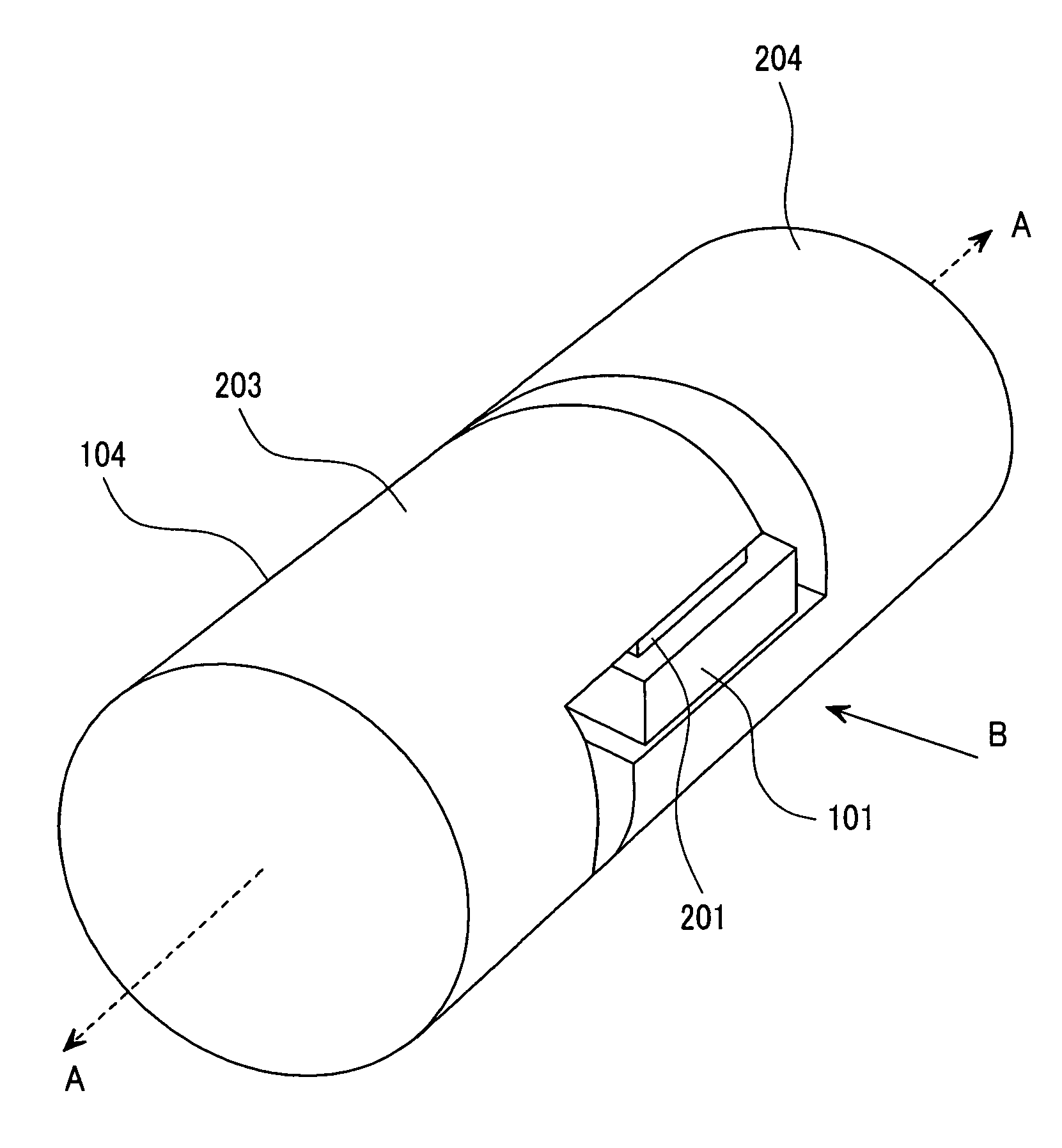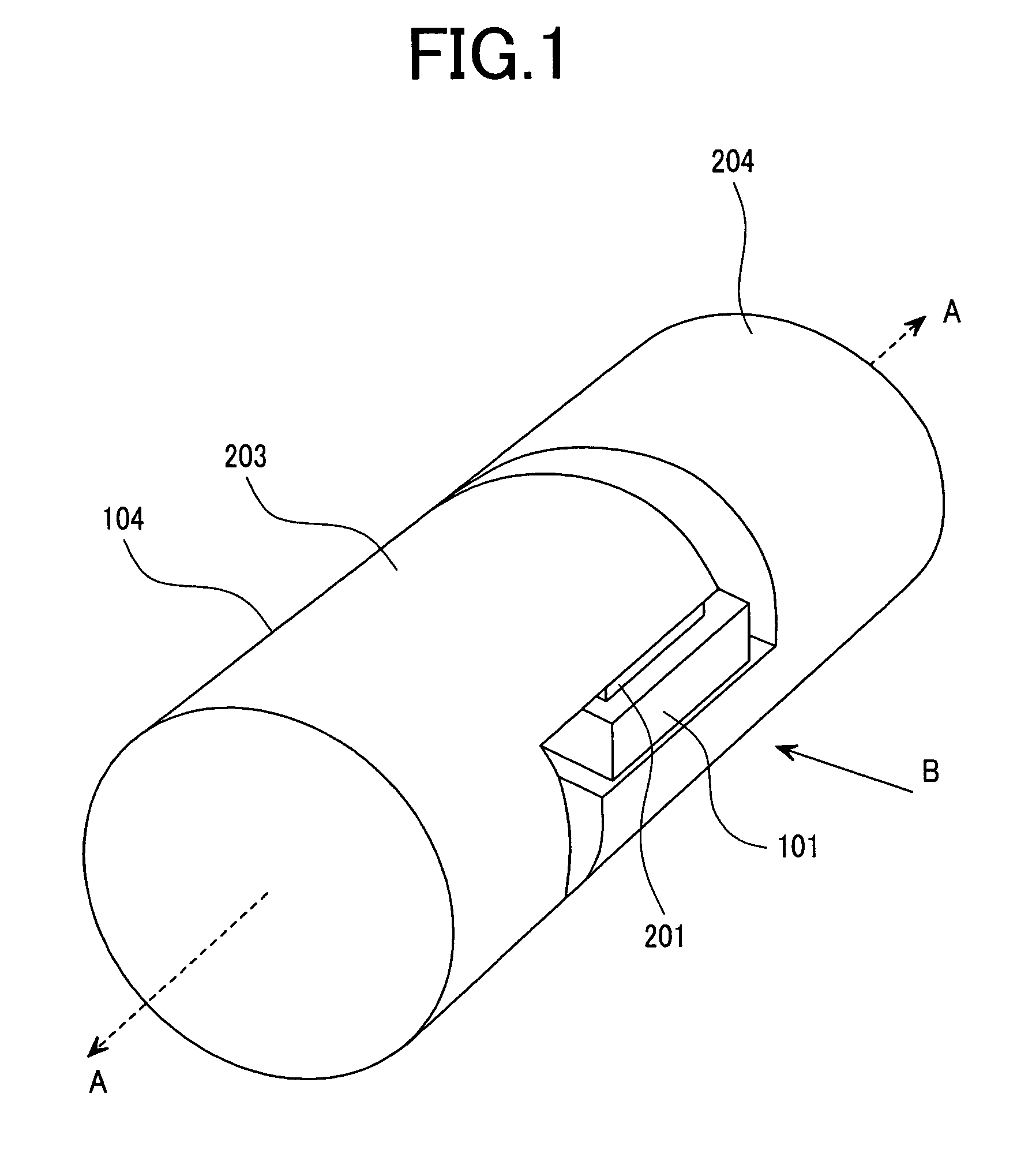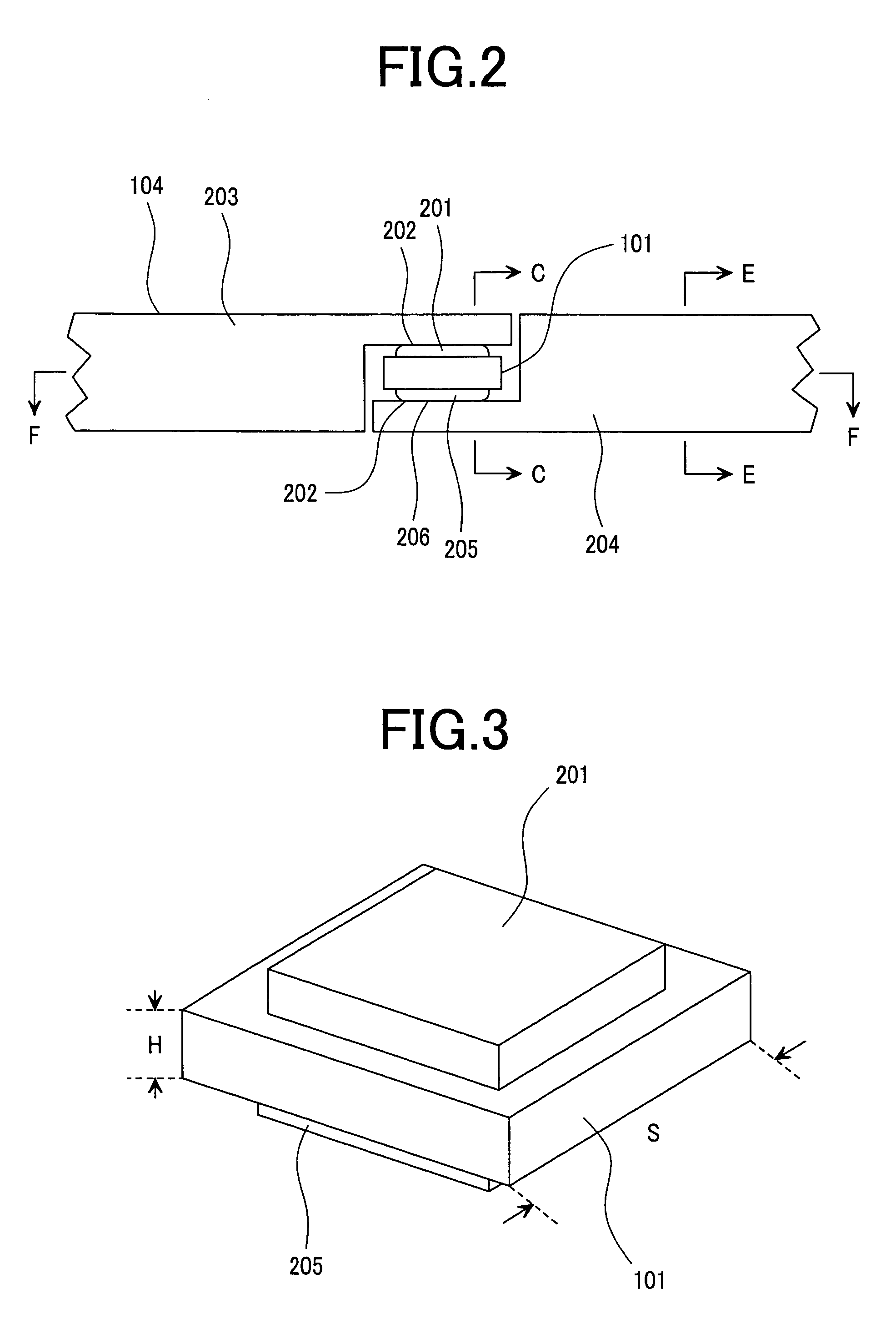Wireless IC tag and process for manufacturing the same
a technology of ic tags and wires, applied in the direction of instruments, resonant antennas, burglar alarm mechanical actuation, etc., can solve the problems of loss of cost efficiency, increase in physical size, radio wave interference by antennas, etc., and achieve simple and effective wireless ic tags, excellent economic efficiency, and compact size
- Summary
- Abstract
- Description
- Claims
- Application Information
AI Technical Summary
Benefits of technology
Problems solved by technology
Method used
Image
Examples
first embodiment
[0050]A first embodiment of the present invention will be described with reference to FIGS. 1 to 13.
[0051]FIG. 1 is a perspective view showing an enlarged connection part of an IC tag chip in the first embodiment of the present invention and an antenna. FIG. 2 shows FIG. 1 when viewed from symbol B, and shows a section of a portion in which the IC tag chip and the antenna are connected. FIG. 3 shows a perspective view of the IC tag chip of FIG. 1. A section taken along a line C-C of FIG. 2 is shown in FIG. 4A, which shows a section of the wireless IC tag in the IC tag chip portion. FIG. 4B shows a section taken along a line E-E of FIG. 2. FIG. 5A shows a section taken along a line F-F of FIG. 2. FIG. 5B is an explanatory drawing on manufacturing.
[0052]Hereinafter, detailed descriptions will be given.
[0053]The wireless IC tag 104 of the present invention comprises an IC tag chip 101 and a pair of antenna conductors 203 and 204 with circular sections connected to its electrodes. The p...
second embodiment
[0107]FIG. 14 shows a wireless IC tag of another embodiment of the present invention. The drawing shows the sectional view of a portion in which an IC tag chip and an antenna are connected. In this embodiment, the wireless IC tag 104 comprises an IC tag chip 101 and a pair of antenna conductors 203 and 204 with a circular section, connected to the electrodes of the IC tag chip 101. The pair of antenna conductors extends in an axial direction with the IC tag chip 10 sandwiched, and constitutes a dipole antenna with a narrow width. The bumps 201 and 205 are on the upper face and the lower face of the IC tag chip 101, respectively, and exist on both sides of the IC tag chip. The bumps are connected to the antennas 203 and 204. The antennas may have a rectangular or elliptical section. The maximum width of the antennas is equal to the maximum value defined in the case of projection, and its maximum value is 1.0 mm or less and its minimum value is one micron or more.
[0108]In this structu...
third embodiment
[0109]FIG. 15 shows a wireless IC tag according to another embodiment of the present invention. The drawing shows the sectional view of a portion in which an IC tag chip and an antenna are connected. In this embodiment, the wireless IC tag 104 comprises an IC tag chip 101 and a pair of antenna conductors 203 and 204 with a circular section, connected to the electrodes of the IC tag chip 101. The pair of antenna conductors extends in an axial direction with the IC tag chip 101 sandwiched, and constitutes a dipole antenna with an arrow width. The antennas 203 and 204 having antenna hooks 208 are connected to the bumps with the bumps 201 and 205 on the upper side and the lower side of the IC tag chip 101 and on both sides of the IC tag chip. The antennas may have a rectangular or elliptical section. The maximum width of the antennas is equal to the maximum value defined in the case of projection, and its maximum value is 1.0 mm or less and its minimum value is one micron or more.
[0110]...
PUM
 Login to View More
Login to View More Abstract
Description
Claims
Application Information
 Login to View More
Login to View More - R&D
- Intellectual Property
- Life Sciences
- Materials
- Tech Scout
- Unparalleled Data Quality
- Higher Quality Content
- 60% Fewer Hallucinations
Browse by: Latest US Patents, China's latest patents, Technical Efficacy Thesaurus, Application Domain, Technology Topic, Popular Technical Reports.
© 2025 PatSnap. All rights reserved.Legal|Privacy policy|Modern Slavery Act Transparency Statement|Sitemap|About US| Contact US: help@patsnap.com



